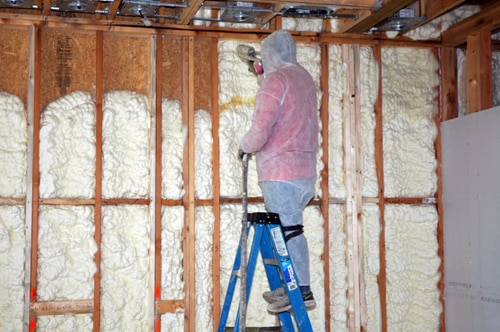Earlier this year i got a question about a home that had spray foam insulation in the attic.
Attic closed cell foam under blown insulation.
This type of spray foam offers the specific benefits of continuous insulation interior wall cavity fill and unvented attic applications.
Open cell foams use water as a blowing agent.
How ducts in an unvented attic should be installed.
The foam usually polyurethane is sprayed to fill cracks and gaps in the attic to form a hermetically sealed barrier.
Whereas blown in insulation works by filling the.
Typically this foam s natural color is yellow when applied in insulation.
In general most closed cell foam and many open cell foam products can be installed without the need of an intumescent coating in an unvented attic and therefore can go bare provided a drywall ceiling 15 minute thermal barrier directly below the attic exists.
Nothing unusual about that.
Medium density closed cell spray foam ccspf.
Yeah if you do a really good job raking the insulation back you can still do a good job with the foam.
However in a traditionally insulated attic insulation on the ceiling the attic is vented.
This medium density spray foam is a closed cell spray foam that is typically used where there is the need for r value insulation per inch possible.
Closed cell foams use enovate also known as 245fa which is.
But it s harder and the chances of success are lower.
In an attic the eaves are one of the most critical places to get good coverage with the foam.
A lot of builders and homeowners are going with spray foam insulation because of the airtightness benefits but then the questioner mentioned that the spray foam contractor had intentionally left big holes to the outside by not sealing the gable vents.
This form of insulation is commonly known as two pound foam as it is a rigid insulating material that requires a thickness of 50 mm when applied in the home.
Spray foam provides the highest r value while open cell spray foam has about an r value of 2 2 to 3 5 per inch closed cell spray foam has about 6 7 per inch.
Open or closed cell spray foam is applied to the underside of the roof sheathing and additional fiberglass or cellulose insulation is blown in as a cost saving method for meeting high insulation requirements and filling in the cavity space between the rafters to the ceiling deck.
Open and closed cell foam insulation use a blowing agent to forms the cells within it.
If you leave the existing insulation in the attic it interferes with the foam installation.

